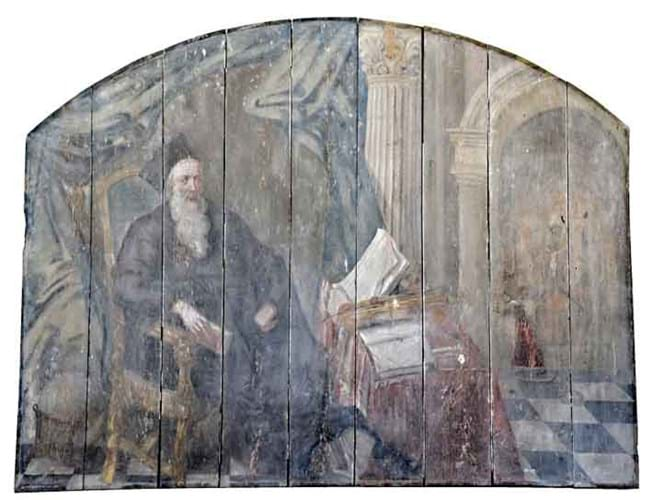Measuring over 8ft wide (2.49m), it was painted on nine wooden boards and depicted the alchemist Edward Kelley (1555-1597), a mathematician and medium who was closely associated with the Elizabethan occult philosopher Dr John Dee (1527-1608).
This highly unusual painting may well have originally been made as part of a series of vernacular wall paintings for a private closet or library.
Having languished in a stable in Warwickshire and then a coachhouse in mid Wales for many years, it had previously sold at a public auction within the last ten years but then re-emerged at Mellors & Kirk's two-day auction on June 12-13.
The auctioneers conducted a considerable amount of research into the picture and the work was identified as the only known painted image of Kelley. Simply catalogued as '17th century English School', it was not thought to be painted from life - it appears to have been based on a later woodcut image of Kelley which was used as the frontispiece to Meric Casaubon's excerpts of Dee's manuscript diary published in 1659.
Kelley was born in Worcester in 1555, educated at Oxford and for a time went by the name of Edward Talbot. From 1582-89 he practised 'cabalist theurgy' or angelic conferences in 'Enochian', the language that he and Dee claimed to have received from angels.
Before acting as Dee's scryer or medium, Kelley had served another magus, Thomas Allen, an astrologer known for practicing "black arts".
The estimate at the Nottingham sale was £3000-5000 - a reasonable pitch given its unusual and somewhat esoteric appeal.
The condition though clearly mitigated against it. The condition report stated it was "extremely fragile with numerous areas of flaking/missing paint... Shrinkage cracks between the boards.. Areas of woodworm on the reverse.. original rusted iron butterfly hinges.. This lot is to be moved solely at the purchaser's risk".
Although the major condition problems no doubt limited its value, on the day it drew decent interest before it was knocked down at £7500 to a buyer on the telephone.
The buyer's premium was 17.5%.





